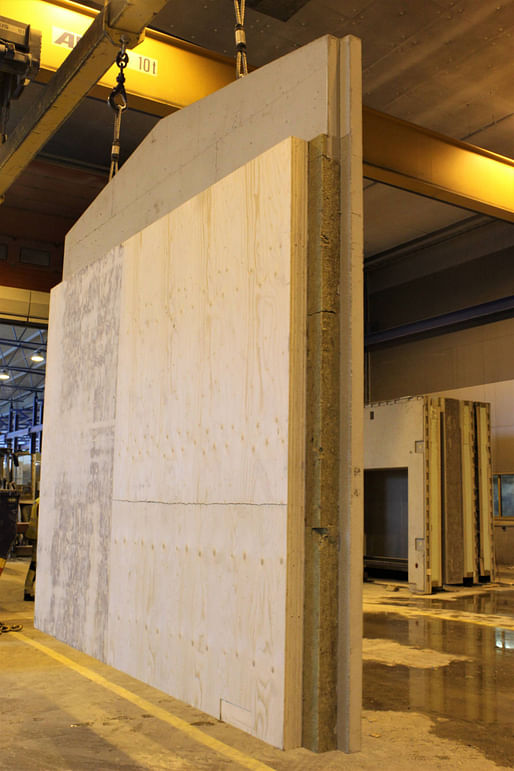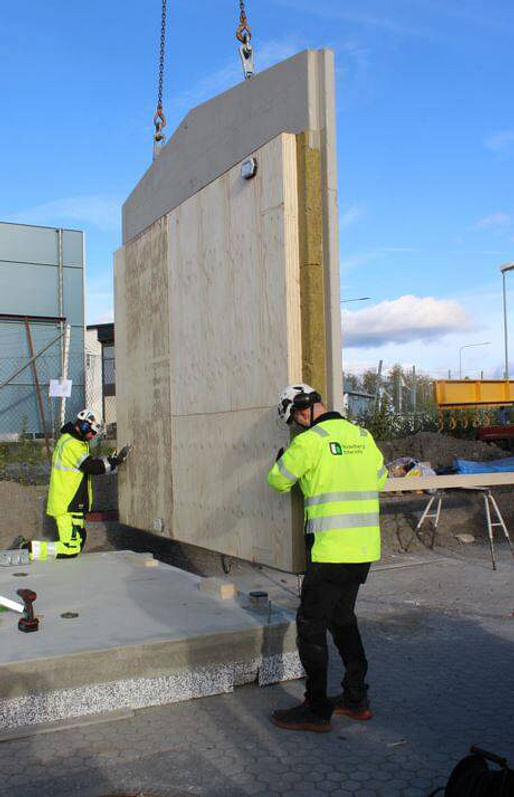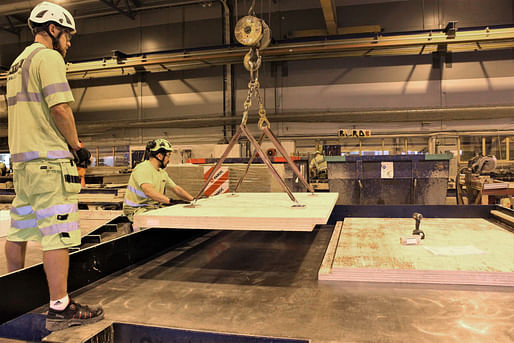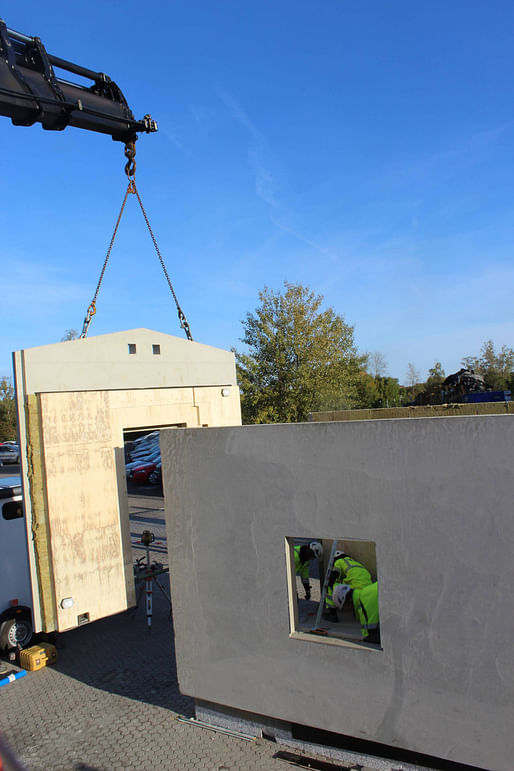
A group of materials companies in Sweden has collaborated on a hybrid wall element with a lower carbon footprint than conventional concrete wall elements.
The joint venture, comprising concrete element manufacturer Heidelberg Materials Preca and engineered timber manufacturer Metsä Wood, is now rolling out the element for live construction projects.

The wall consists of a facade element in a sandwich construction with an outer layer made of 'climate-improved' concrete, intermediate insulation, and a load-bearing inner panel made of strong, material-efficient laminated veneer lumber. According to the group, the wall module has approximately 30–50% less of a climate impact than an equivalent traditional concrete wall while also being 60% lighter.

To test the wall, the team constructed a home using the elements. The structure was equipped with moisture sensors to monitor the wall and indoor environment’s performance. From their tests, the group determined that a typical house using the system could reduce its overall structure climate impact by 15–25%. According to the team, the wall is particularly suited for buildings with up to five floors, such as residential, office, school, or healthcare facilities.

“The European Union aims to be climate-neutral by 2050, and the construction industry can contribute significantly to reach this target, and we’re experiencing a demand for climate-smart solutions from the construction industry,” said Håkan Arnebrant, Business Development Manager at Metsä Wood, about the product.

“One of the advantages of this hybrid element is that construction contractors do not have to change their way of building with concrete elements but can still lower their carbon dioxide emissions,” Arnebrant added. “At the same time, the walls can be made 50–75 millimeters thinner than walls built with concrete elements, which can give quite a few extra square meters in a building.”

The wall is one of several material science innovations recently featured in our editorial. Earlier this week, we reported on an ETH Zurich 3D printed sculpture that oscillates between ‘opaque boundary’ and ‘transparent curtain’ while 3D printing company ICON unveiled a suite of new material technologies.
Last week, London-based ecoLogicStudio unveiled a product line formed of biophilic materials while scientists from the University of British Columbia published research investigating the possibilities of wood fly ash by-products in construction.
No Comments
Block this user
Are you sure you want to block this user and hide all related comments throughout the site?
Archinect
This is your first comment on Archinect. Your comment will be visible once approved.